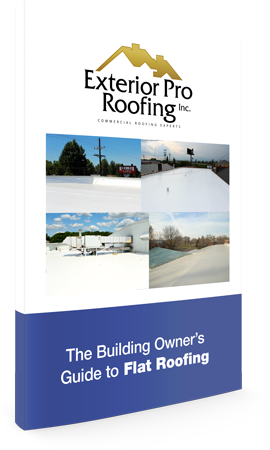“The best way for a building owner to ensure satisfactory post-installation roof system performance is to have a formal, long-term maintenance agreement with a professional roofing contractor.”
— The National Roofing Contractors Association
 Nothing is more critical to the life and performance of a newly installed roof system than regular inspection and proper maintenance. Partner with an experienced, qualified roofing professional to layout a long-term maintenance program.
Nothing is more critical to the life and performance of a newly installed roof system than regular inspection and proper maintenance. Partner with an experienced, qualified roofing professional to layout a long-term maintenance program.
Maintenance programs offer the following advantages to building owners:
- Identify and repair problems before they become significant issues.
- Reveal and address potential leaks before they are occur.
- Allow for responsible, timely preparation of long-term capital expenditures.
- Shorter response time to repair leak issues.
In this post, we’ll walk you through who to partner with, and what you as the owner will be responsible for in the partnership.
Who To Partner With
Partner with a professional roofing contractor who:
- Knows local building practices and environment.
- Knows different roofing systems and can recommend which systems work best for different building types.
- Maintains a trained, documented and experienced workforce.
- Has a proven track record of responding quickly to issues.
Before you partner with a roofing contractor, be sure to vet them completely. Research their client history, ask for recommendations, obtain the details of insurance coverage, and ensure they have established a permanent business location (versus working out of their truck).
Owner Inspection
Even with a partner and agreement in place, it is your responsibility to be diligent with the inspection and protection of your own roofing system. Specifically, you’ll need to:
- Keep all files related to the roof organized and available.
- Set up regular inspections and maintenance sessions with the contractor, and ensure all activities are recorded.
- Log access times and other parties working on your roof in case damage occurs.
- Report damage as soon as it occurs so repairs may be scheduled and executed sooner.
- Inspect your roof system at least two times a year, once in the spring and once in the fall.
- Inspect the roof after heavy storms and weather, especially hail or if there is a lot of debris.
- Remove debris from the roof and roof drains regularly.
- Notify contractors as soon as leaks are identified, and provide details on the environmental conditions (i.e. heavy rain, wind direction and temperature).
- Allow only authorized personnel on the roof, and limit access when the outside temperature is very hot or very cold.
With the above steps and considerations, you’re well on your way to ensuring the long-term performance of your roofing system.
It's all in this free ebook below. In it, you'll learn how to select the best contractor, roofing membrane and warranty for your needs.







